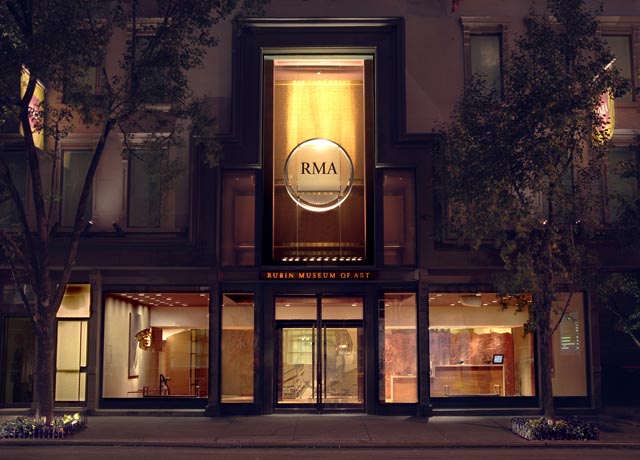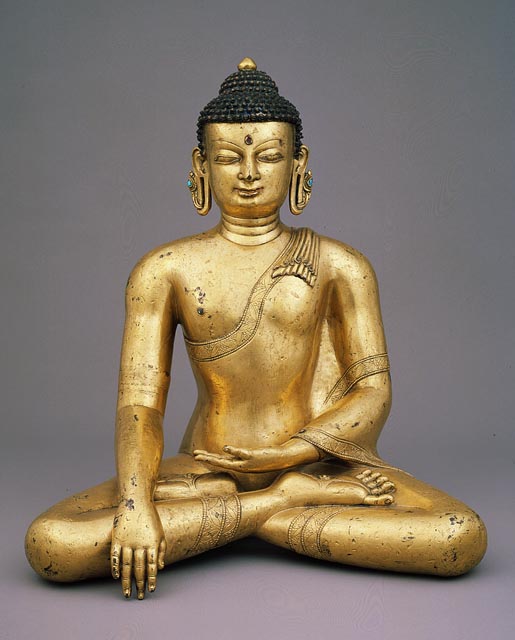
Donald and Shelley Rubin have discovered many treasures of the spirit and the soul along the way…
In the heart of Chelsea in New York stands a bountiful bulwark and anchor of Eastern spirituality, a treasure trove of hundreds of Himalayan artifacts, as peaceful and inspiring as a Buddhist temple. This is the Rubin Museum of Art, started just four years ago by the noted philanthropists and collectors, Donald and Shelley Rubin.
Before this transformation, the space was the upscale Barneys department store, home to hip styles and fashions, a temple to consumerism and consumption. It might have remained just that had not the Goddess Tara entered the lives of Donald and Shelley Rubin many, many years ago.
Ask Donald Rubin about his elaborate journey of collecting and connecting with the East over the years, and he recalls, “It was quite by accident. The year was 1974 and we had just saved up $3000. When you start a new business you have no money at all, you basically live from hand to mouth.”
Walking down Madison Avenue, they had encountered a painting of the Goddess Tara in an antique store, and were completely mesmerized. Recalls Rubin, “It was $1500 and we just gambled that we would be able to live the rest of the month on $1500. We put it in our bedroom and it talks to us.”
He adds, explaining the power of that painting: “Art is not something that you appreciate intellectually. It’s like love – it’s an emotional experience and you have to feel the art – it has to in some way come into your soul to really love and appreciate it and this painting did that.”
The Rubins, whose fledging business went on to become the hugely successful Multiplan Inc., a major health provider, graduated to a 60,000 sq. foot office which they filled with their passion, Eastern art, buying hundreds of Tibetan, Nepalese and Indian paintings and sculptures.
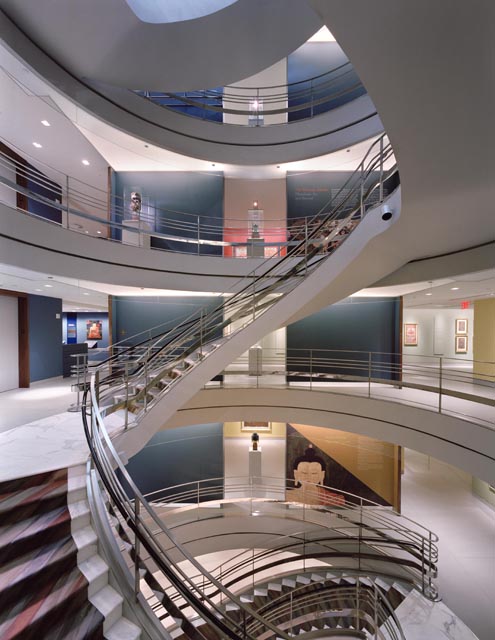
Fifteen years later, the Rubins sold the business, and decided to donate a majority of their works to the museum they had created – The Rubin Museum of Art. (www.rma.org) “That’s how it began – it’s a love affair – it’s an emotional experience,” says Donald Rubin. “I am a maverick in the sense I believe that collecting and appreciating art is more of an emotional rather than intellectual field – I am negative about reading too much about what I’m seeing until I really love it; once I fall in love with it, I go back and see what the experts say.”
“My father and mother were trade union leaders and their life was about giving back to working people,” he recalls. “I was basically brought up in a way that said you have to dedicate your life to doing good to others.”
Donald and Shelley have done exactly that, sharing their art with the world through the museum, putting in place educational and academic programming to open the world of Eastern art to a larger audience. Both are co-chairs of the museum, and are dedicated to the preservation and study of Asian art. Recent exhibitions have including a textile show from India and Pakistan, and an ambitious exhibition on Jain art is planned later in the year.
Dr. Martin Brauen, Chief Curator at the museum, says, “RMA’s collection includes more than 2,700 exceptional pieces from Tibet, Nepal, Mongolia, Bhutan, and other Himalayan regions. Recognized as the foremost collection of Himalayan art, its strength is in its artistic and cultural diversity.”
The Rubins first traveled to India, Bhutan, Nepal and Tibet 15 years ago and have now visited it several times. It’s become a family love affair and in fact, one of their grand-daughters is looking to join college in Delhi!
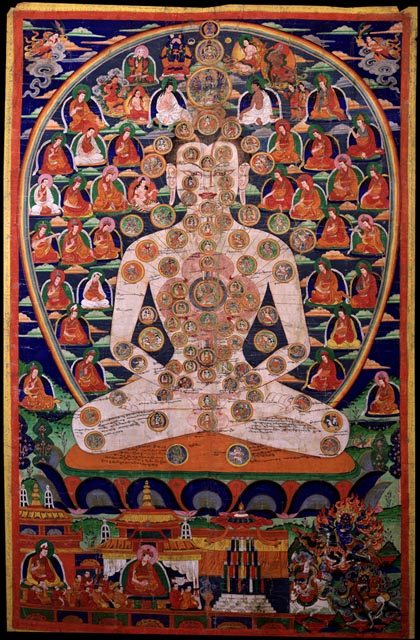
Donald and Shelley Rubin sold their company four years ago and have injected the money into causes they believe in, such as the museum, and the Himalayan Art Resource ( www.himalayanart.org) to virtually exhibit and catalog Himalayan and Tibetan art from collections around the world.
Donald says: “I am 74 years old – I have retired from making money but I’m working full time for the foundation and the museum.” Indeed, these are totally different riches and the beneficiaries have been the people of New York who are getting exposure to the complexities of Eastern art and spirituality.
The most unique aspect of the museum is its democratic nature: it is accessible to scholars and connoisseurs as well as regular people and small children, the spiritually centered and the spiritually inept.
Bejeweled with Himalayan art from many centuries, the museum spirals seven stories, and is crowned with a copula through which sunlight and starlight is reflected. It’s a little like reaching out to nirvana, a timeless spot of calm in the chaos of Manhattan.
In spite of having donated the bulk of their collection to the museum, the Rubins still have a wonderful number of paintings and sculptures with them, including 150 Himalayan antiquities, besides 400 pieces of contemporary Indian art as well as the work of several Tibetan contemporary artists.
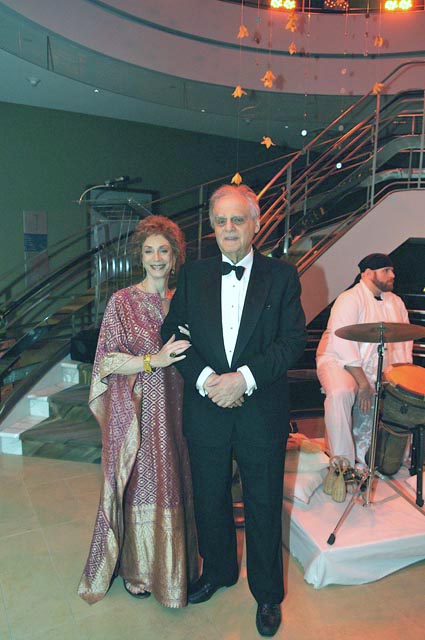
Their personal collection includes famous artists like Husain, Souza, Ram Kumar and Kulkarni to many unknown names. The Rubins originally started buying the young Tibetan artists to support them but the art was so beautiful that they decided to collect and show it. Some of the noted Tibetan artists that the Rubins collect include Tenzing Rigdol and Gonkar Gyatso.
Ask Rubin about the favorite pieces in the personal collection and he says, “I have three children and I don’t know if you can say which one is your favorite child. I like so many of the art works – I have hundreds that I feel are my favorite – so I don’t rally want to judge them as I think it corrupts my ability to aesthetically love things.”
Eastern art has such a spiritual context that spirituality has inevitably permeated the lives of the Rubins. Donald admits he is not a religious practitioner but was impressed when he saw the Jain, Hindu and Buddhist art of the Ajanta and Ellora caves existing side by side. He says, “I don’t know why we can’t get back to that same passion for living in peace and tranquility without murdering each other most of the time.”
Ask Donald Rubin why he thinks it’s important for this art and culture to be better known in the West, and he says, “It’s about the understanding of the human condition, it teaches lessons in compassion – it’s about cleansing, healing, compassion.”
The Rubin Museum of Art and the riches of spirituality it contains is a small step in that direction.
© Lavina Melwani. Photos courtesy: The Shelley and Donald Rubin Foundation
Related Article: Walking with the Dalai Lama
